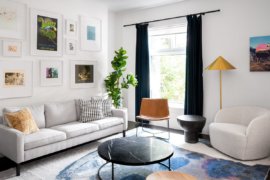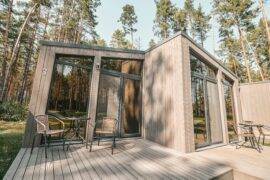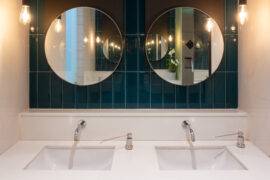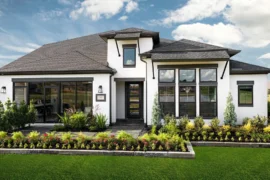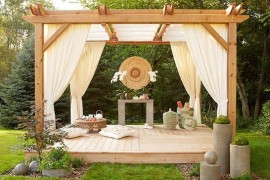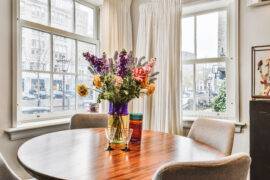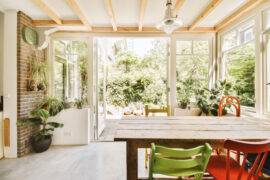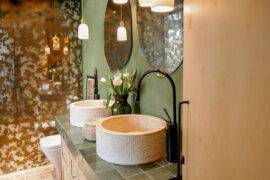This past week, I spent some time in my garden. It’s been a rainy fall, so there’s been a LOT of new growth. From bright colors in the autumn-blooming flowers to the seasonal hues on bushes and trees, there’s inspiration around every corner. It occurred to me that we can learn a thing or two about interior design from our gardens. After all, sometimes the best decorating lessons come from nature! Read on for six tips involving color, style and the value of being patient when it comes to adorning our interiors…
1. Don’t be afraid of color.
This is the first year I’ve lived in my current place, so what’s blooming in the yard each season is a bit of a surprise to me! Which is why I was delighted when a few clusters of aster (shown below) popped up earlier this month. I’ll be honest–I’m really picky when it comes to planting flowers, and I tend to steer away from purples and blues, instead gravitating toward oranges and magentas. I never would have chosen aster on my own, but now I wouldn’t have it any other way! [photo by Kate Simmons]
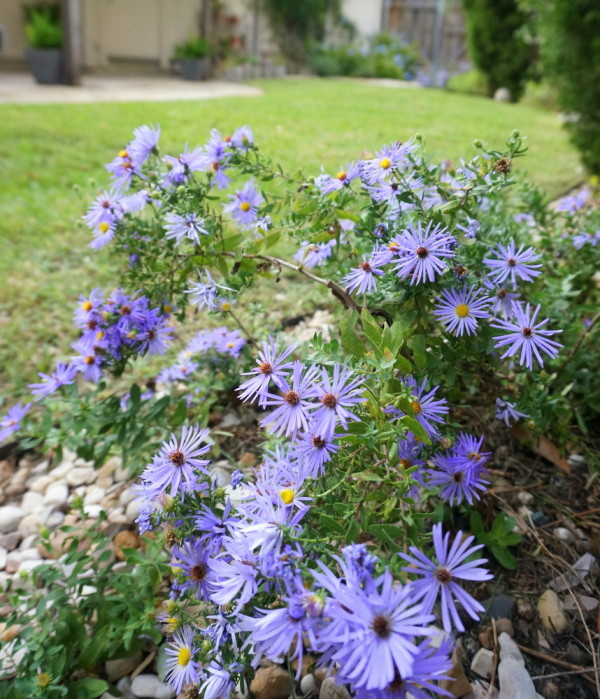
Seeing my plant in full bloom made me realize that sometimes giving color a chance can be a good thing! Even a color that might not be one of your go-to favorites. I guess I’d always seen periwinkle as a bit too traditional for me, but just look at the modern Baltimore bedroom below, decked out in periwinkle blue and bold yellow… delicious! [from Ziger/Snead Architects]
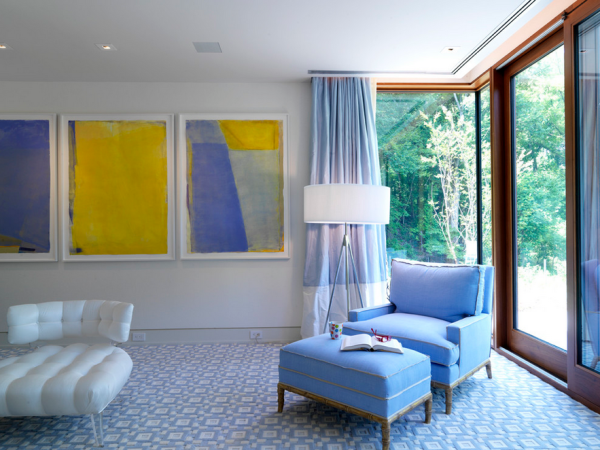
2. Sometimes getting the look you want takes time.
Another fun development in my garden: the prolific growth of the silver falls dichondra I planted in late spring. A few viney clusters on the ground have turned into the cascading greenery I’d hoped for. It took months, and there’s still a long way to go before the mint green foliage becomes the waterfall I’m dreaming of… But just as in life, good things come to those who wait! [photo by Kate Simmons]
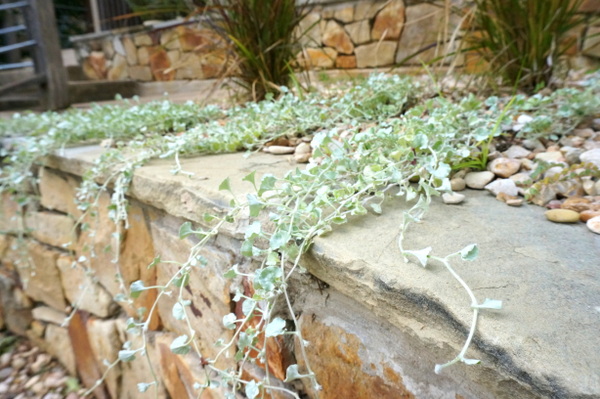
The same thing applies to our interiors… Whether we’re searching for a cart that’s the perfect size to fit under the countertop or looking for the right accent colors to create a fresh, bright space, a little planning may be in order. As well as some trial and error. But when everything comes together in just the right way, it’s SO worth it! You’ll be glad you took your time.
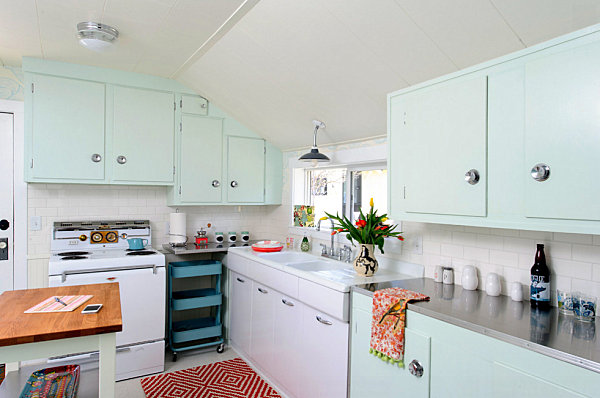
3. Select a few pieces with a big payoff.
The rose bushes in my backyard bloomed this spring. And then again this summer. And again this fall after the heavy rain! Yes, this is the plant that keeps on giving. There was a landscaping plan here, and it went into effect long before we moved in. The plan must have involved choosing a few bushes that would make a big impact with repeated blooms. Now that’s strategy! [photo by Kate Simmons]
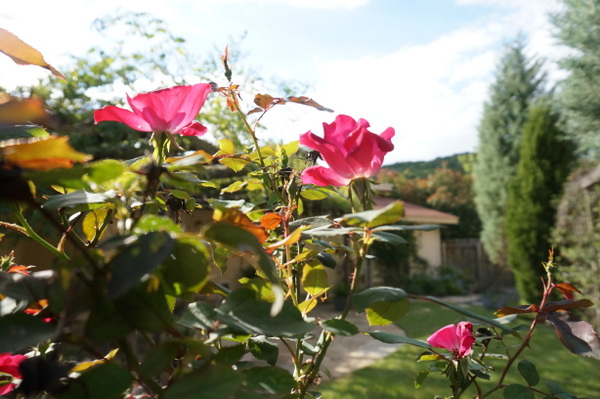
The same technique can apply to your interior! Have you ever walked into a room and been blown away by the bold look of a rug, pendant light, or furnishing in a vivid hue? Sometimes your space needs a showpiece–an item to make a big impact. For example, it’s hard to ignore the rosy shade of the nightstand below. It really pops in this all-white kids’ room. [from Incorporated]
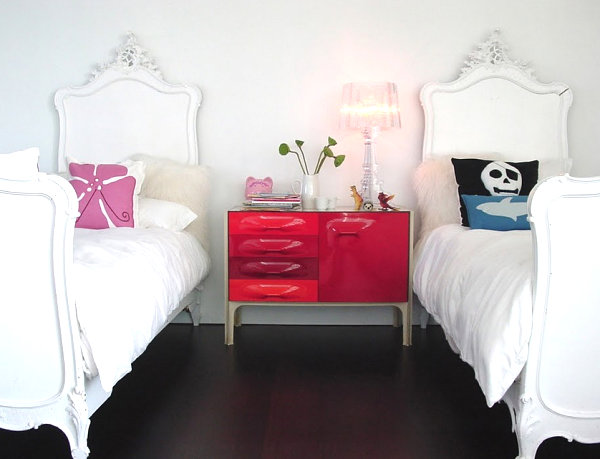
4. A centerpiece can set the tone of your space.
I have a bad track record with succulents. Supposedly maintenance-free, these plants have little luck under my care. No matter what I do, I tend to somehow provide less-than-ideal growing conditions. Which is why I’m thrilled that the succulent centerpiece on my outdoor table has done nothing but grow since its early summer planting. Score! [photo by Kate Simmons]
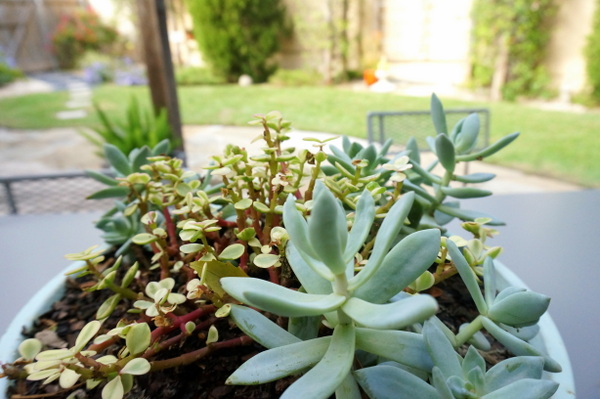
My succulent centerpiece (which could easily be an indoor centerpiece) is a great reminder that one eye-catching focal point has the power to anchor a space. And there’s just something about fresh greenery that can’t be denied! One look at this green-on-green centerpiece in a modern Seattle dining room, and I want to head to the florist and explore the possibilities for my indoor space! [from MusaDesign]
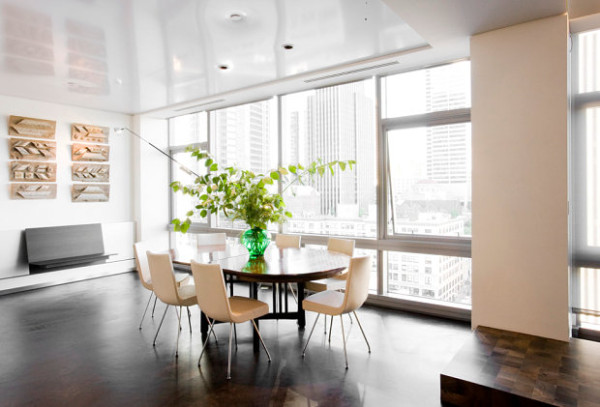
5. Go wild, but know when to reign it in.
The new growth in my garden is apparent in many of the potted plants, especially the cinder block containers below. I love the way the plants are wildly blooming, yet they’re neatly contained in their linear “pots”. There’s something of a wild-meets-tame look here. Which made me wonder… [photo by Kate Simmons]
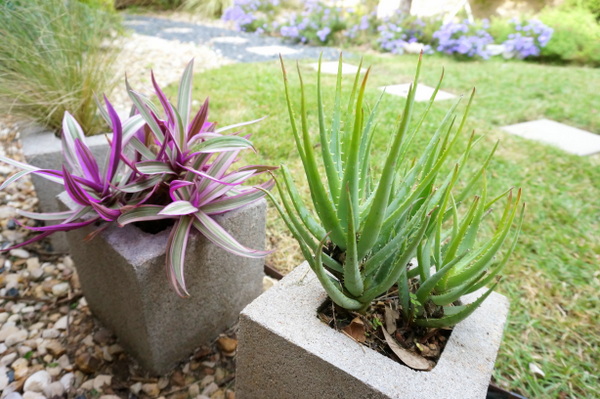
What would a wild-meets-tame look like indoors? Could it involve cascading plant life? Absolutely! Could it incorporate flowing drapes and bold fabric? Of course! But it might also involve the use of opulent lighting, over-the-top geometric artwork in vivid hues, and a plethora of bright accents. There’s something of a color explosion going on in the room below. Yet white walls, a transparent coffee table, and the neat borders of the artwork’s frame neatly “contain” the radiance. [from Kyle Bunting]
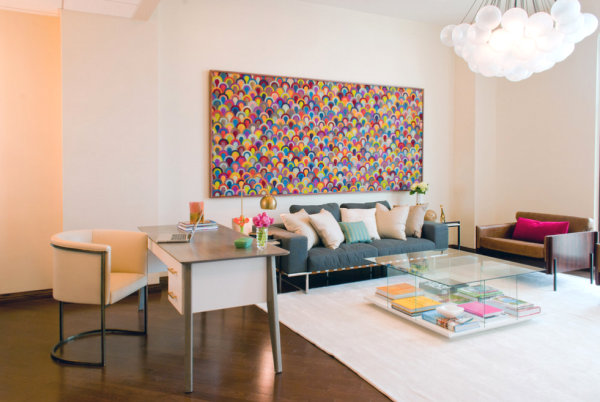
6. Introduce some seasonal color to your interior.
It’s hard not to notice the seasonal color in the garden. Especially the rust and burgundy tones appearing on bushes and trees! They add such a festive touch, confirming that nature knows autumn is here. Plus, the earth tones and rich reds are the perfect contrast to the green of leaves and grass. [photo by Kate Simmons]
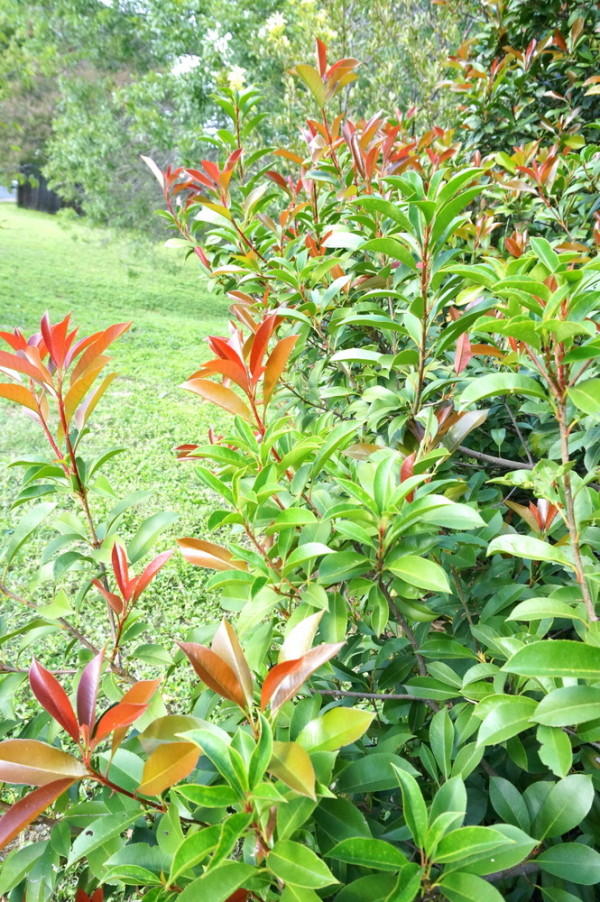
Whether you’re into “fall decorating” or you prefer to keep it subtle, it’s always fun to include a couple of items in seasonal hues. As shown below, an amber glass bowl adds a warm touch. A vase of flowers in a shade of fire red can make an amazing statement. And if you’re in the market for new furniture or artwork, you may find that introducing a bit of fall color is just what your space needs year-round! [from Adam Breaux]
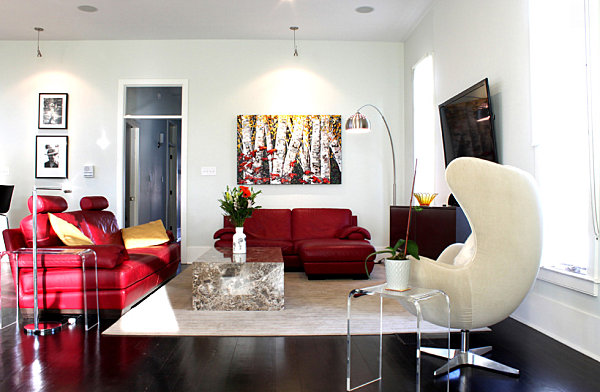
What are some ways that you are inspired by the natural world around you? Share your thoughts by leaving a comment below…
